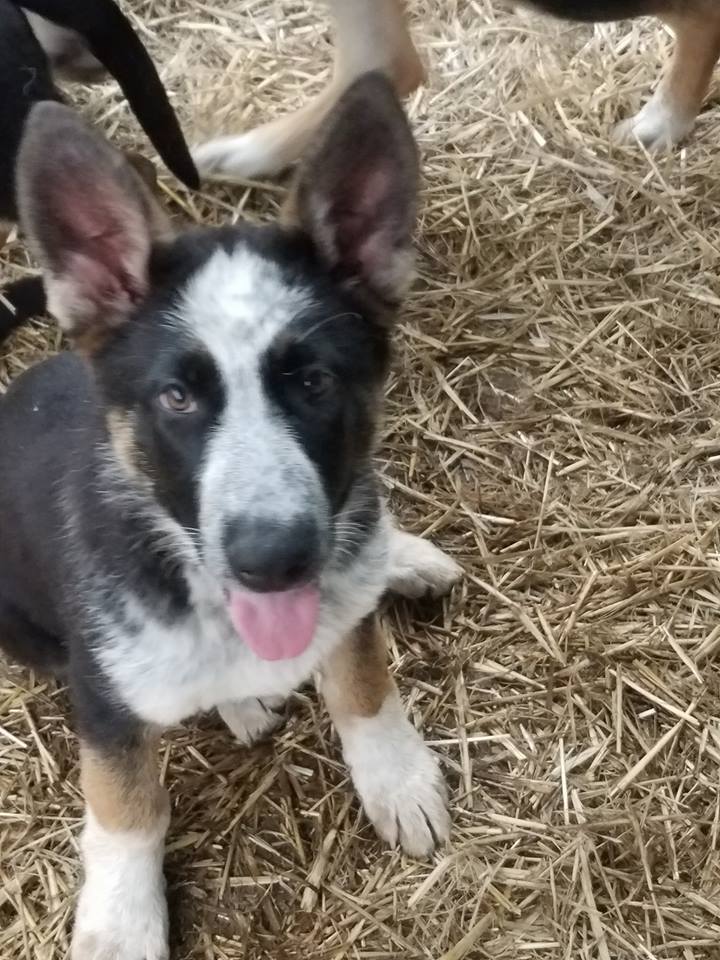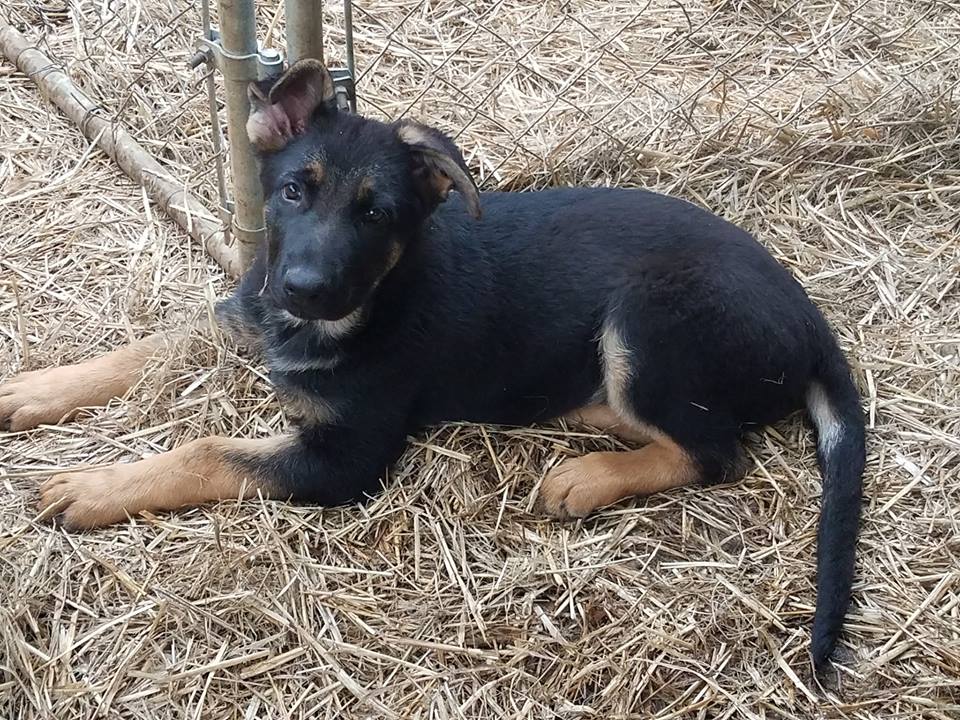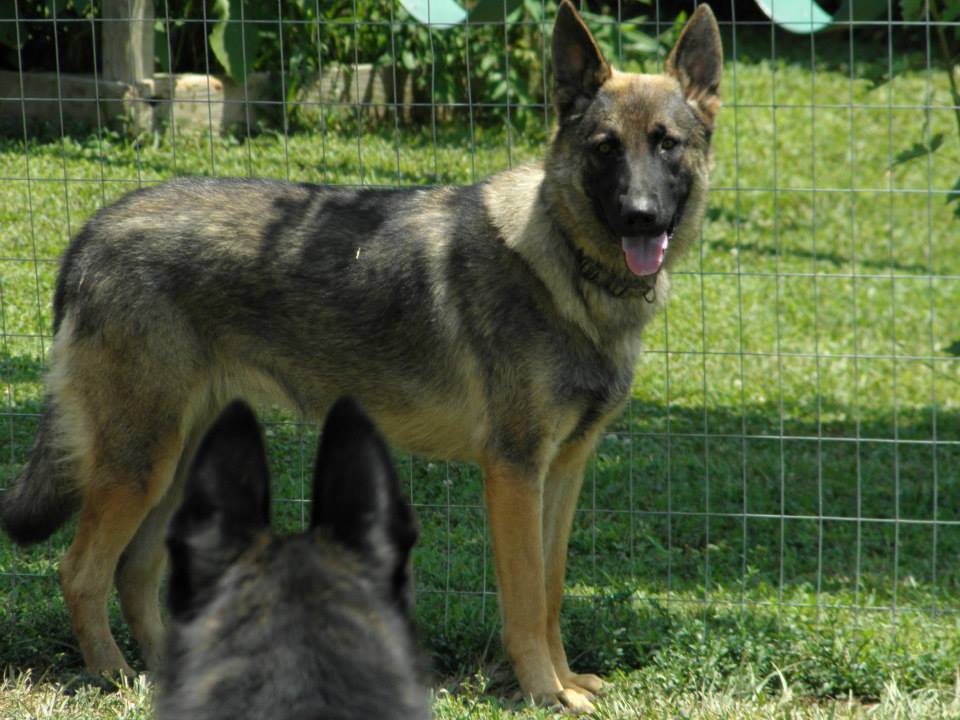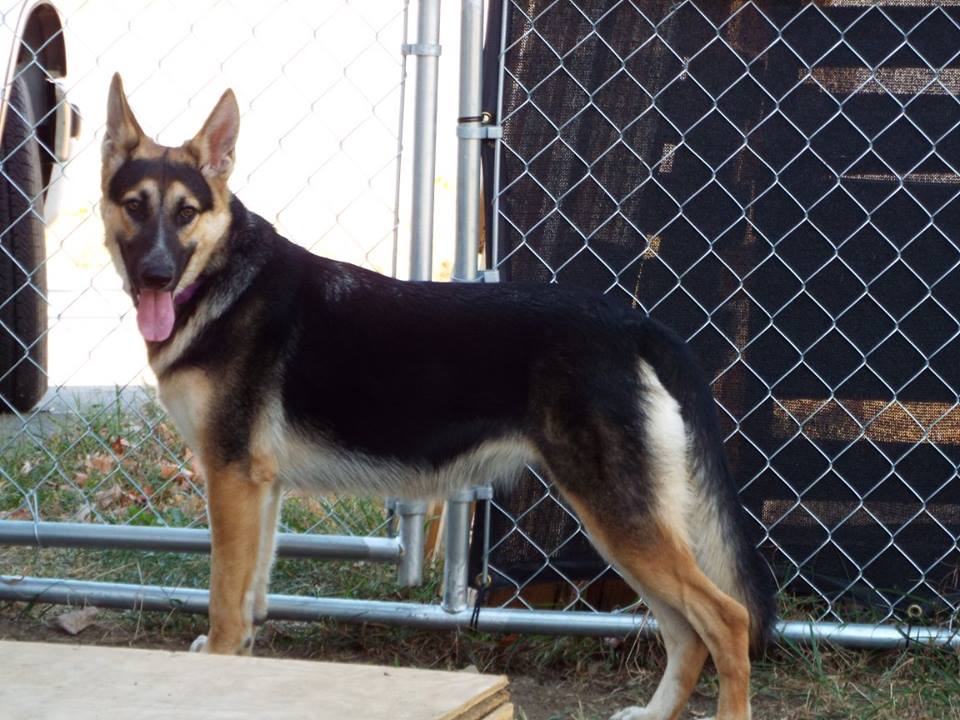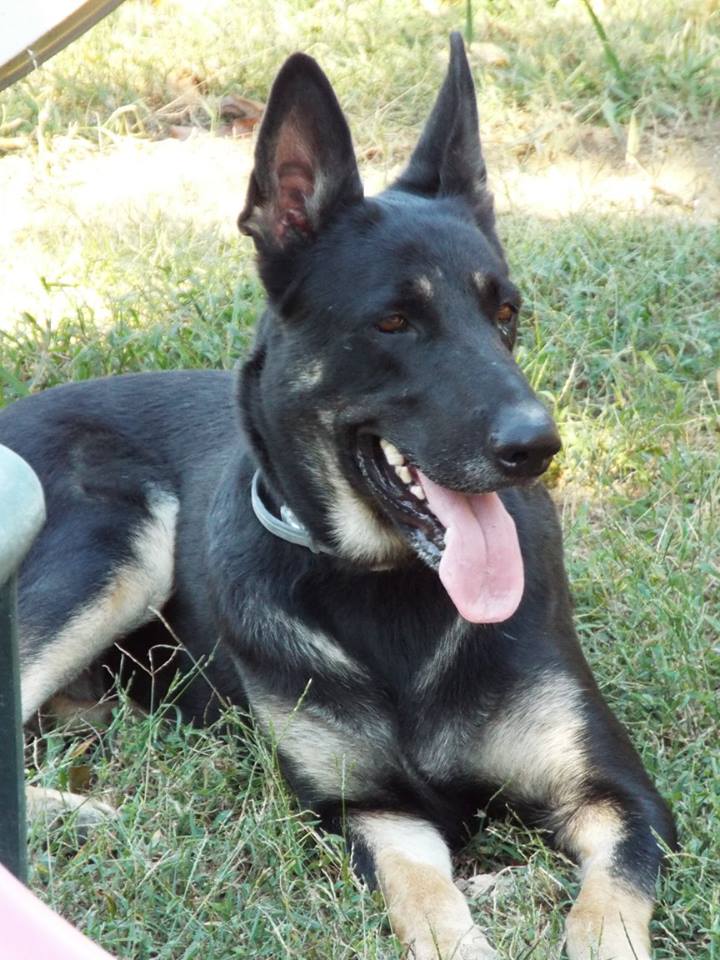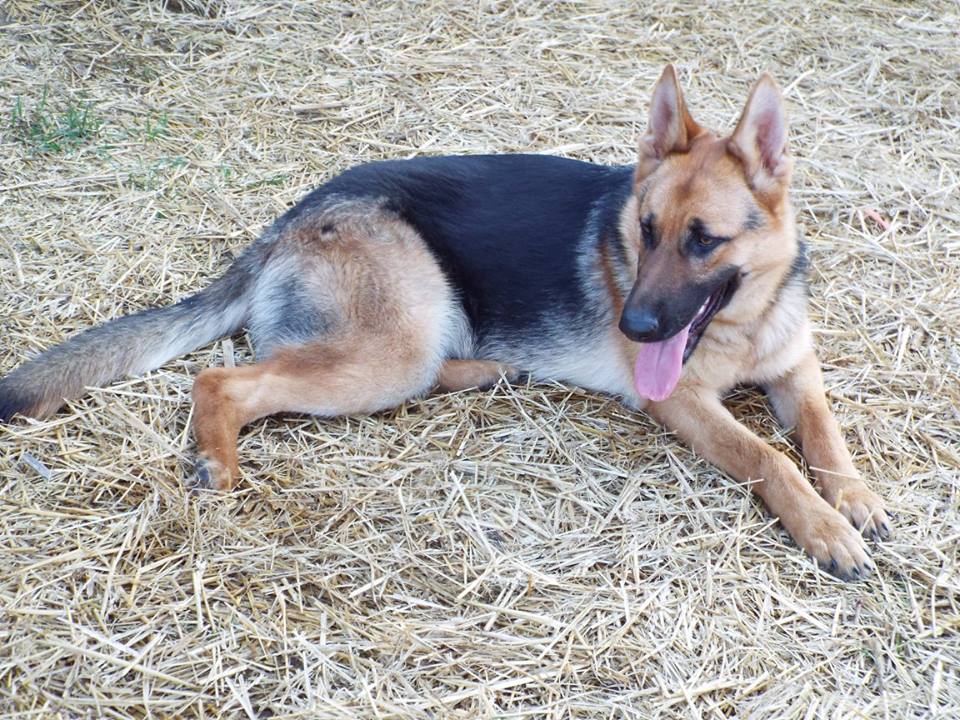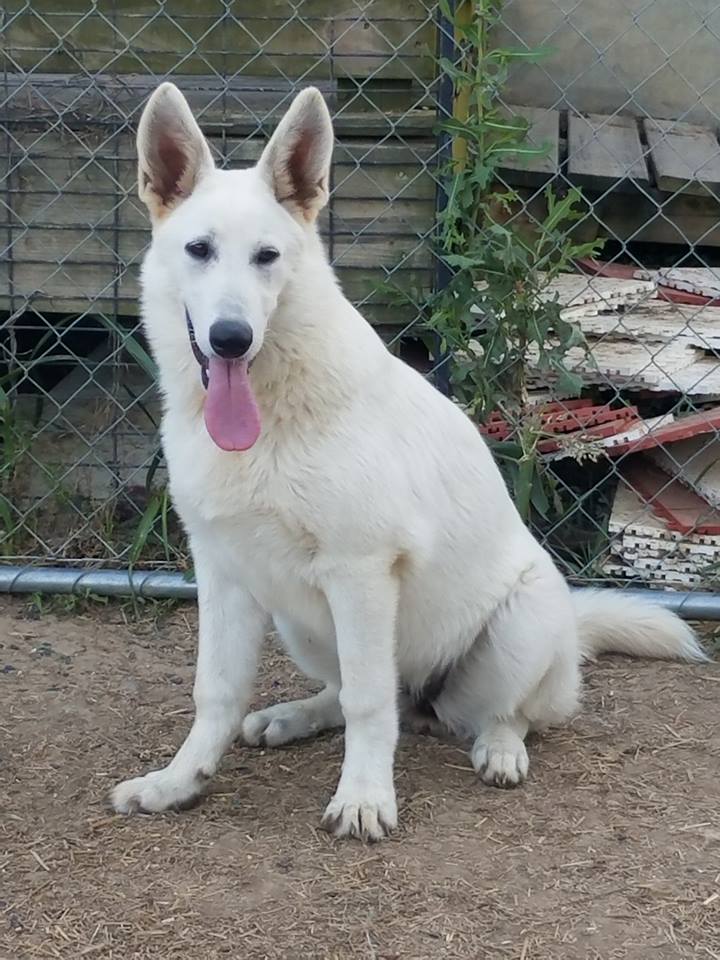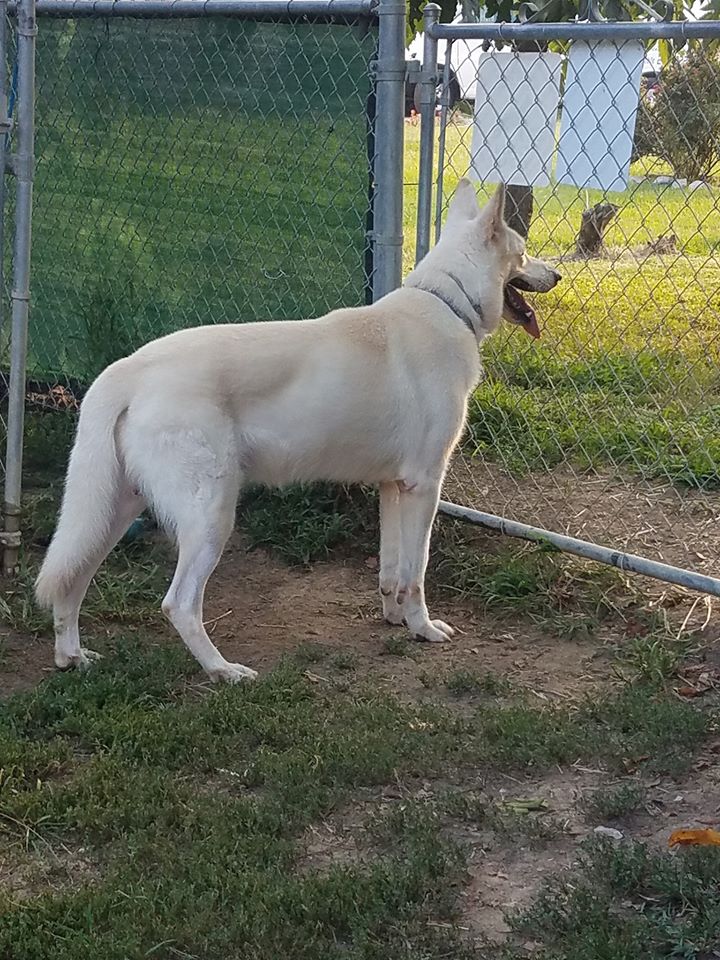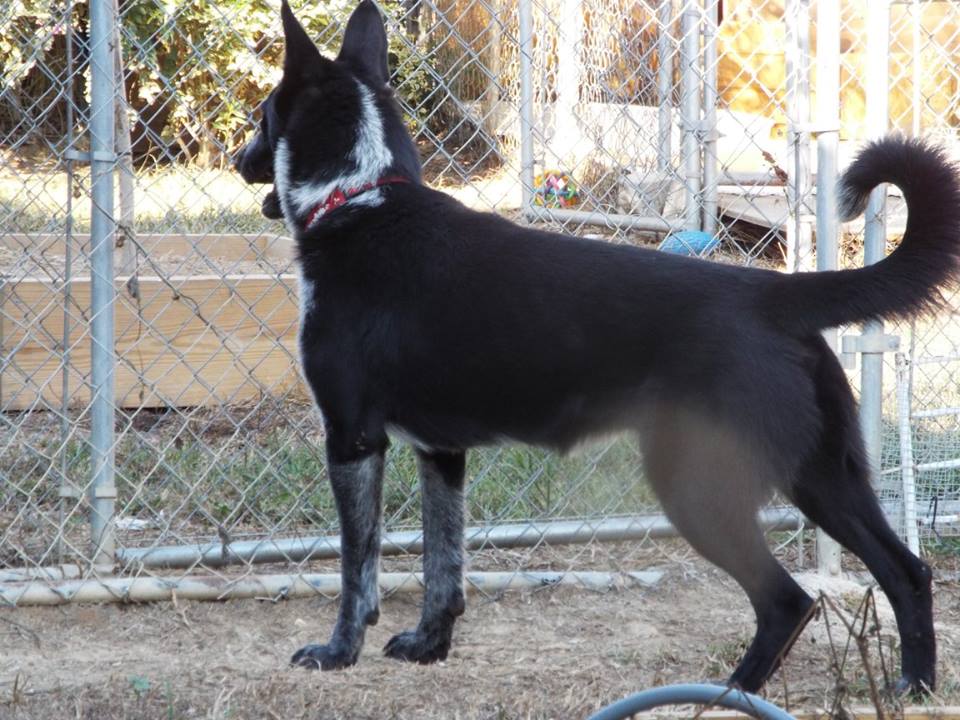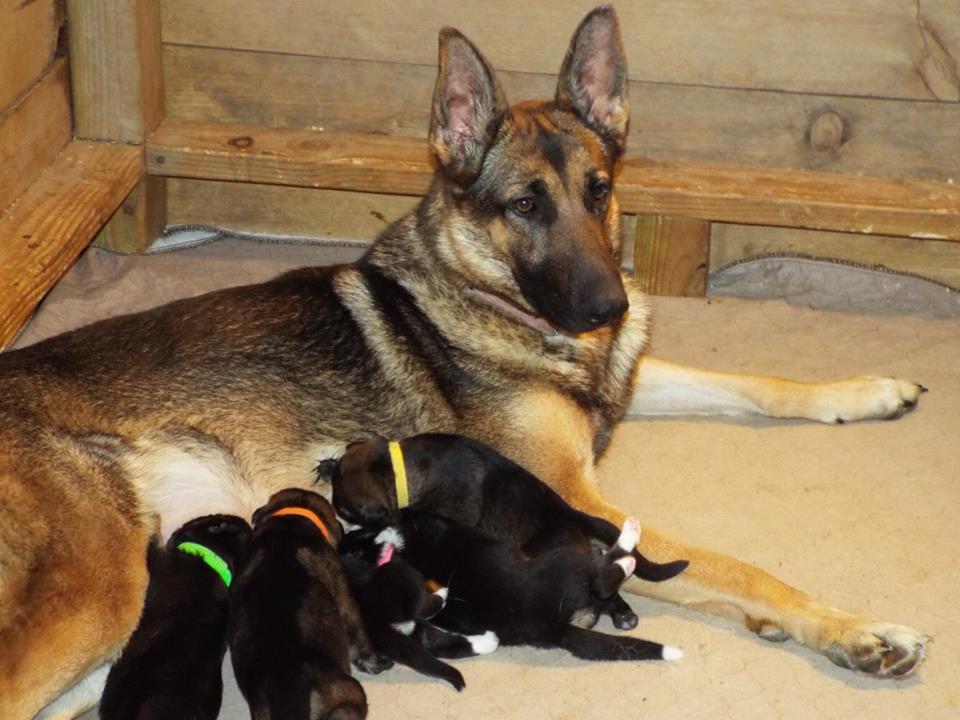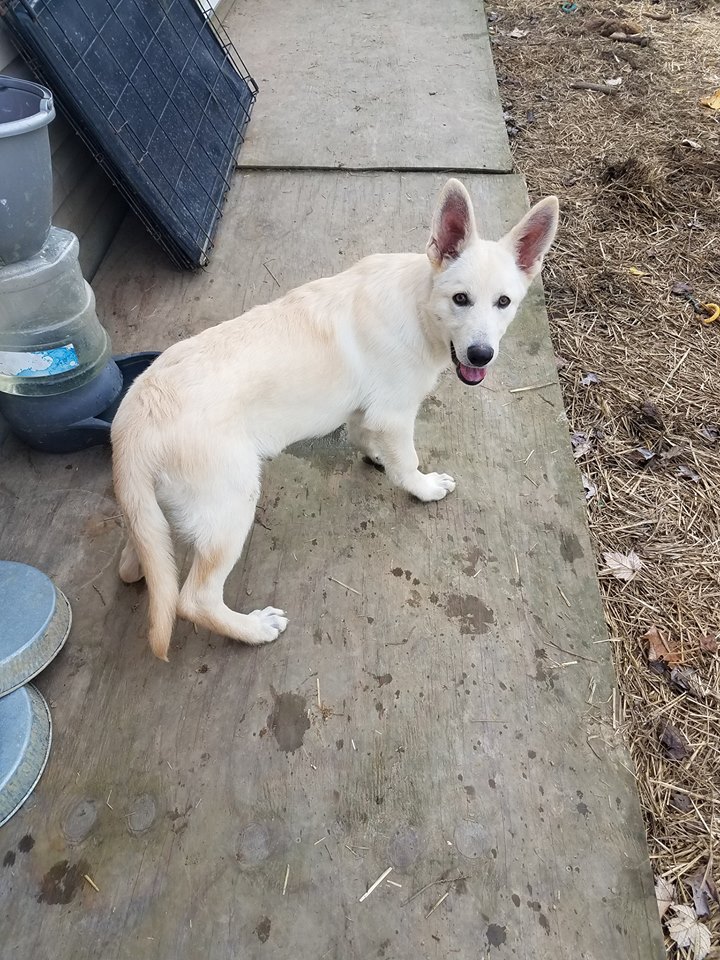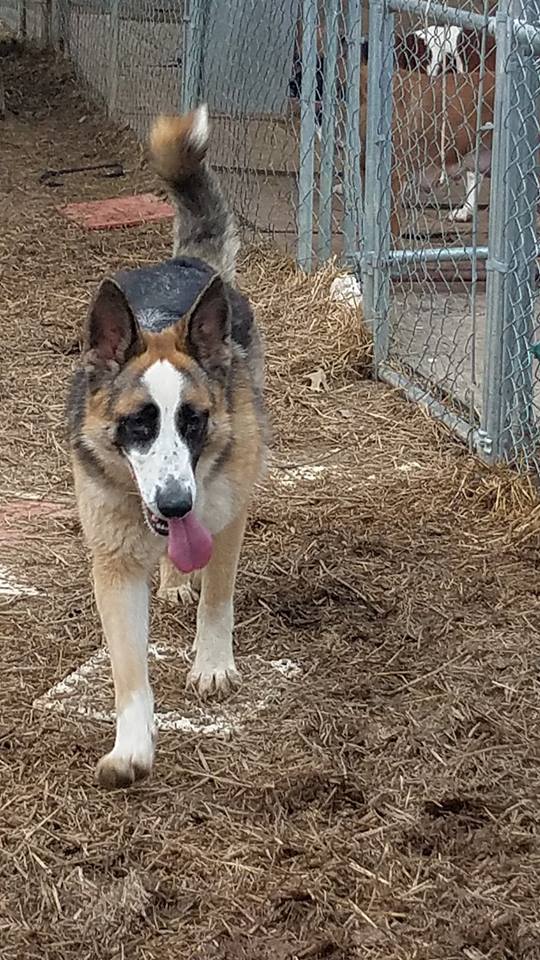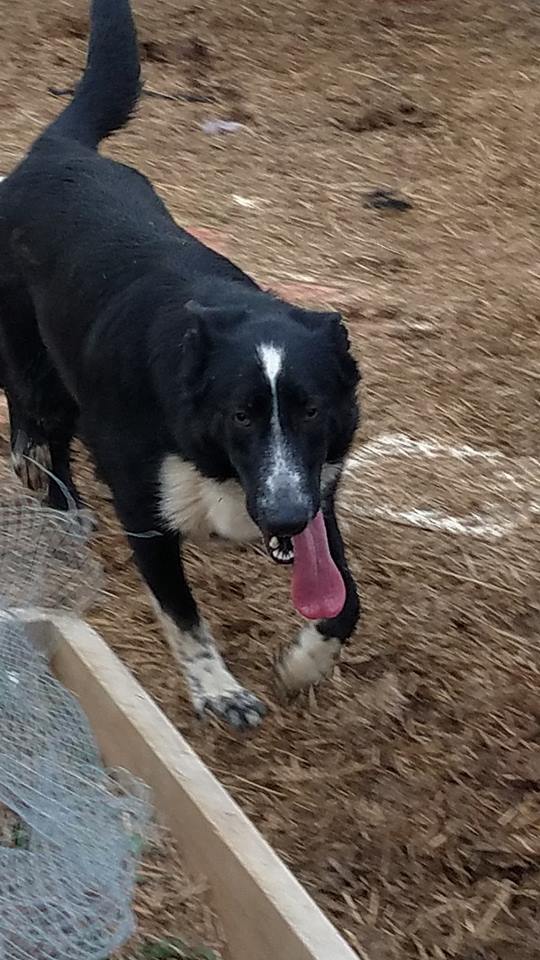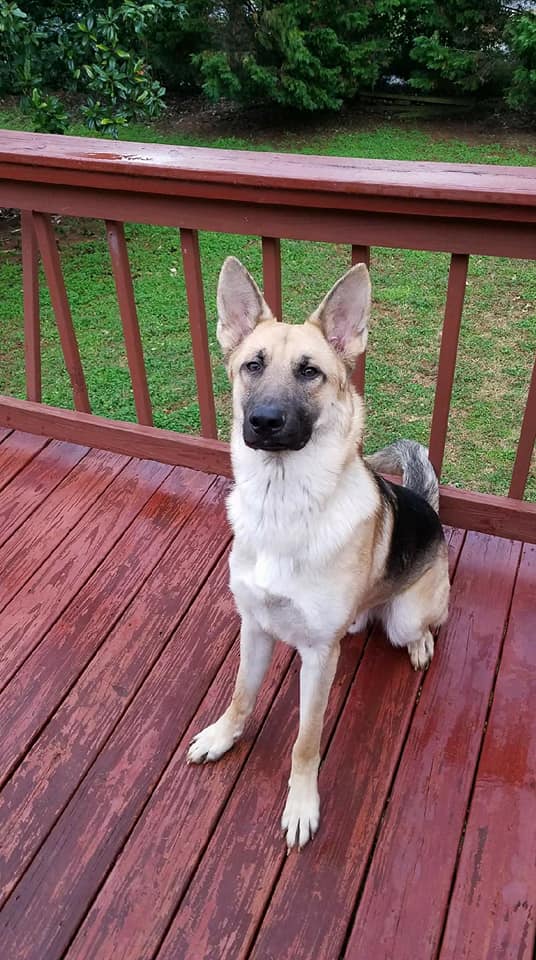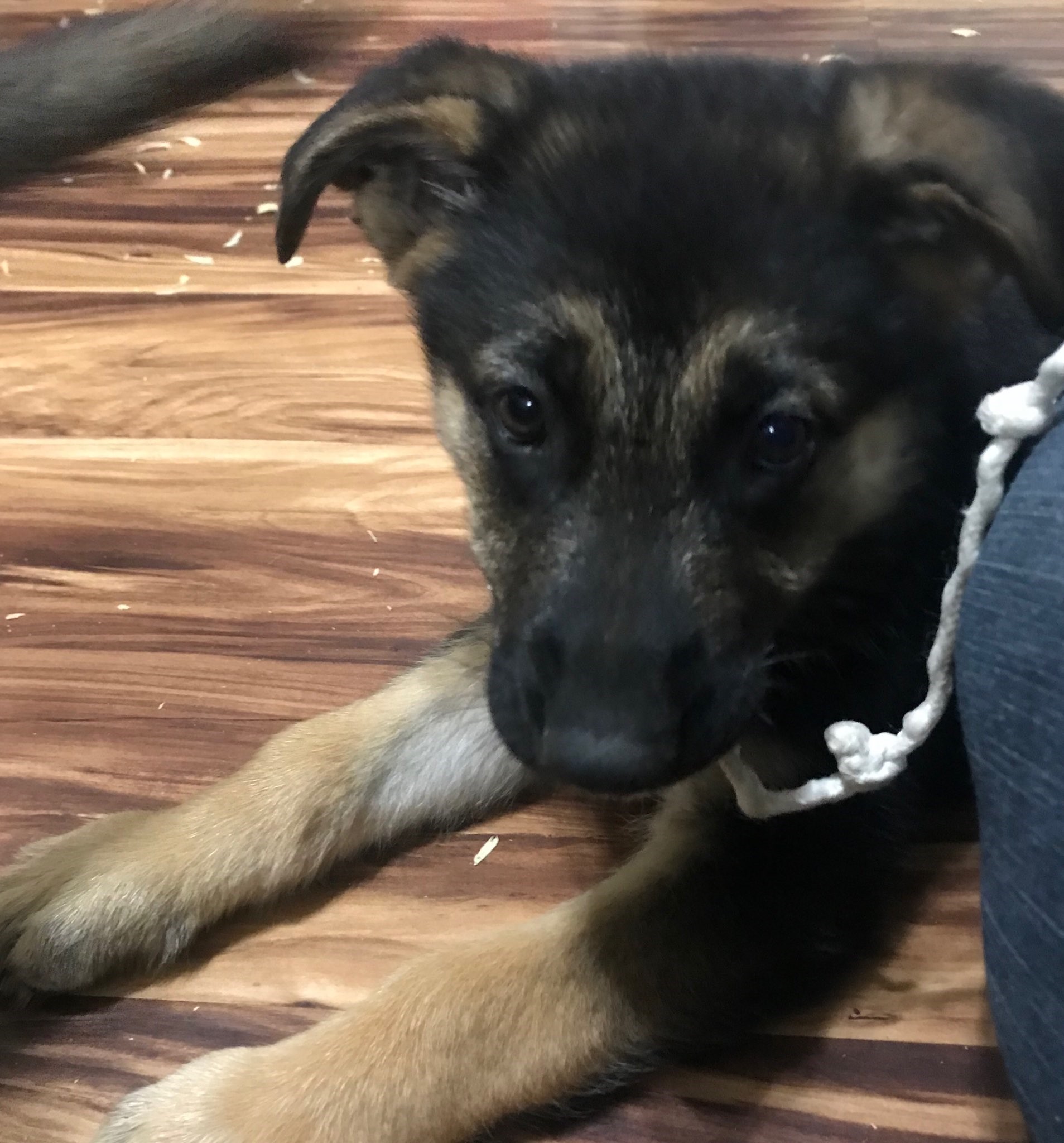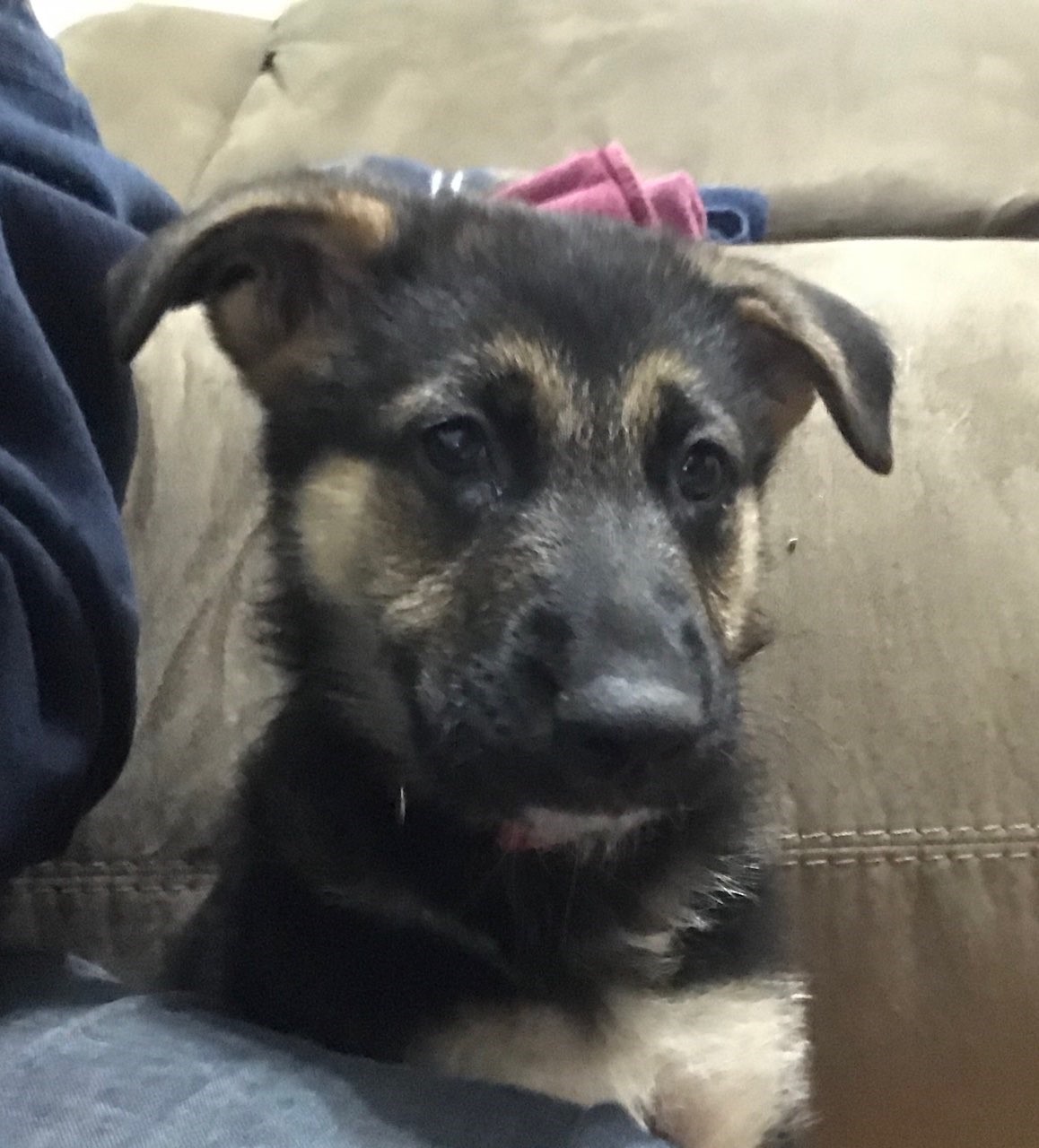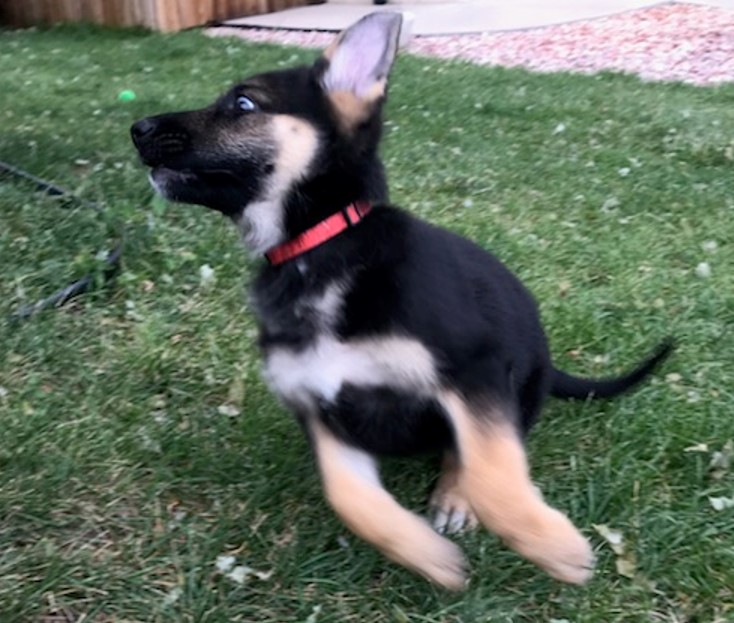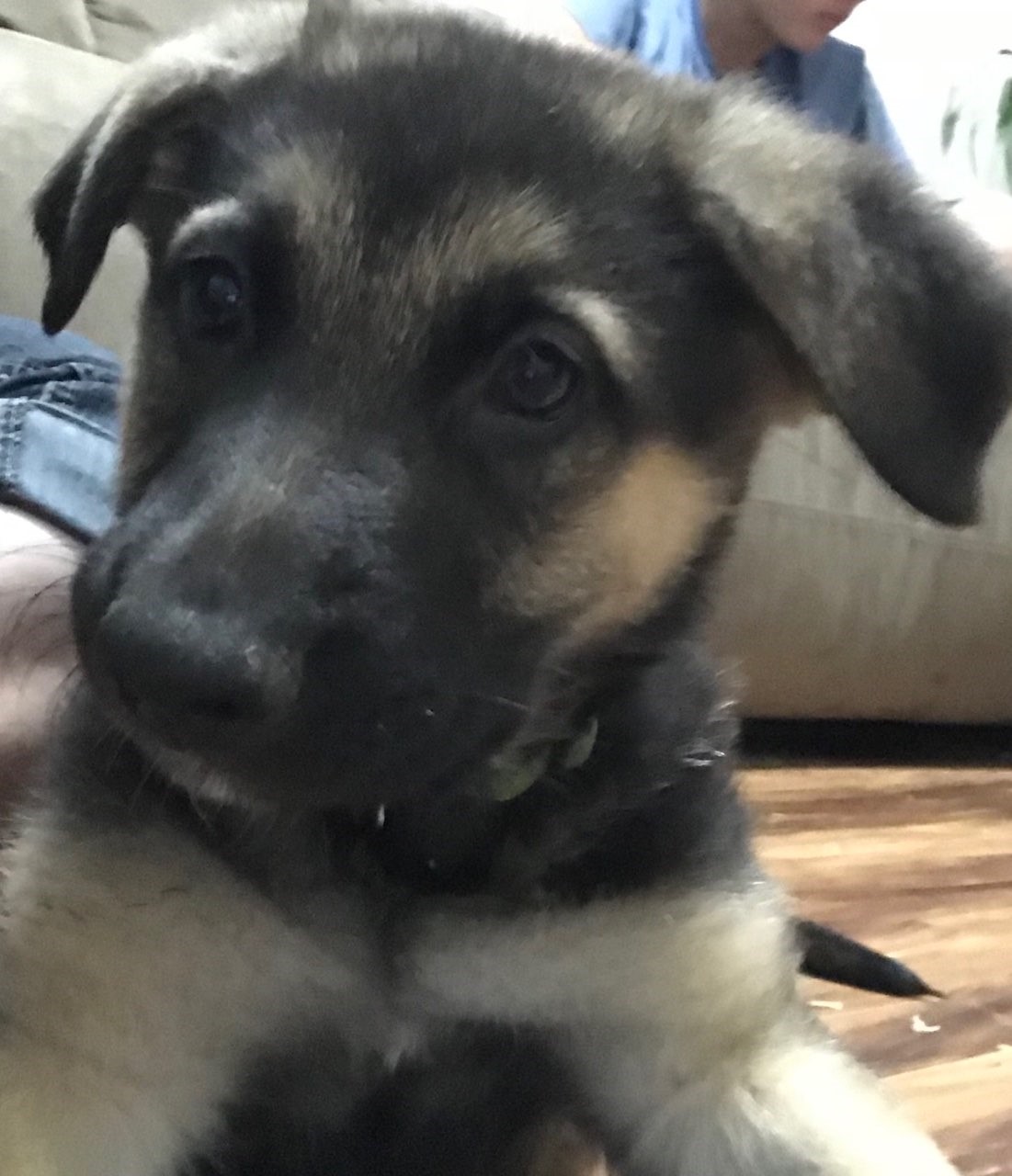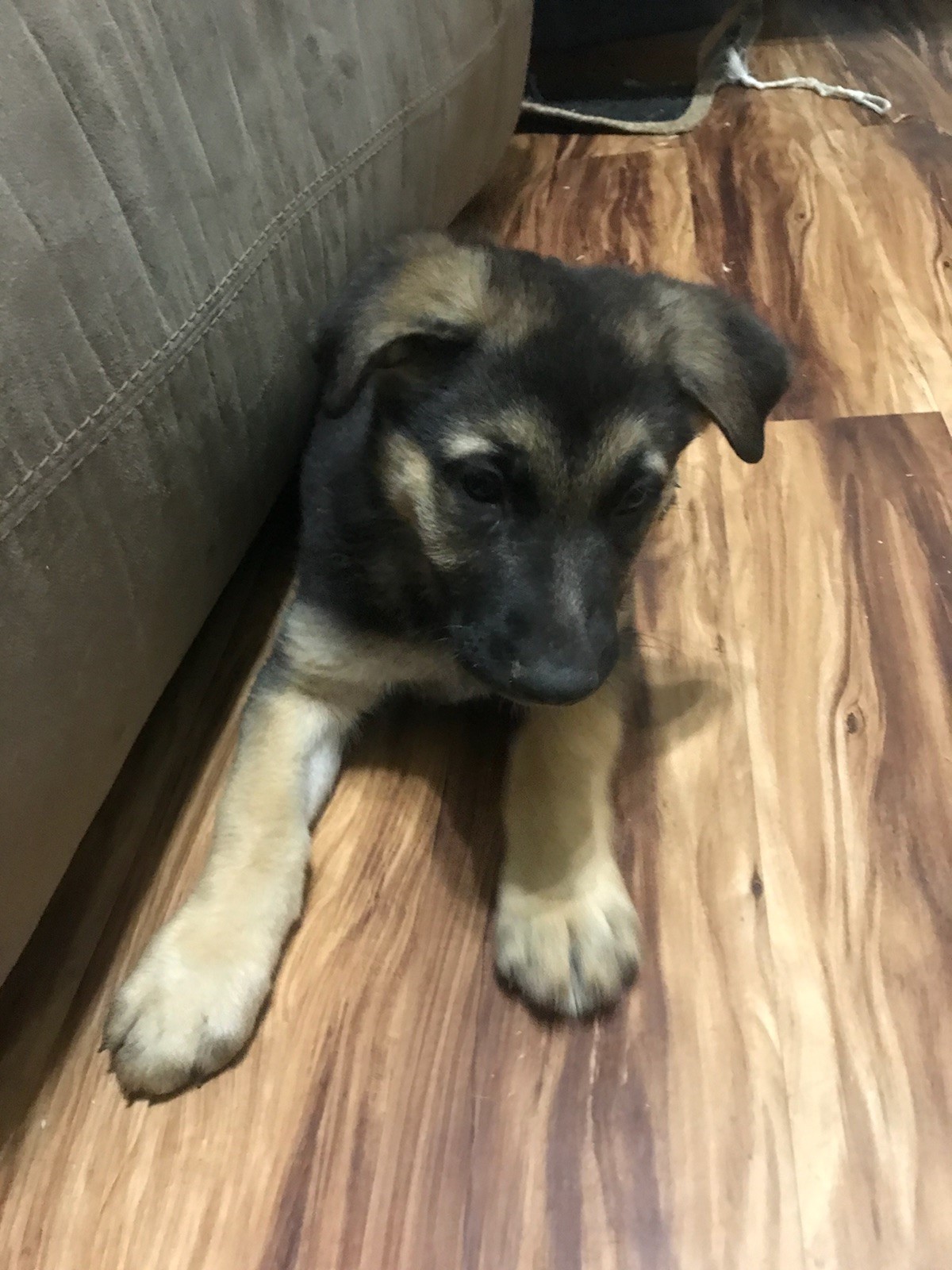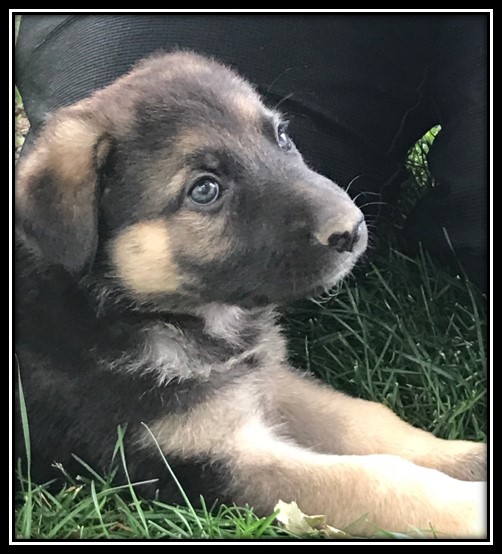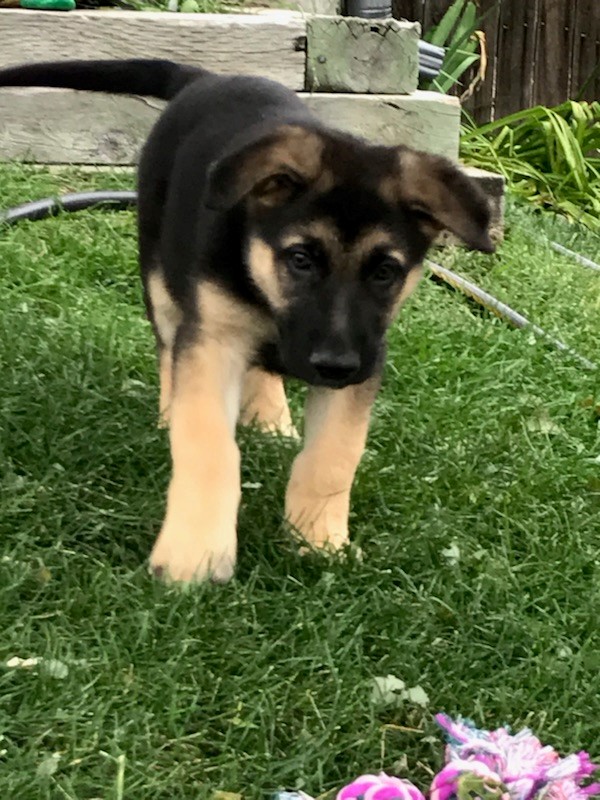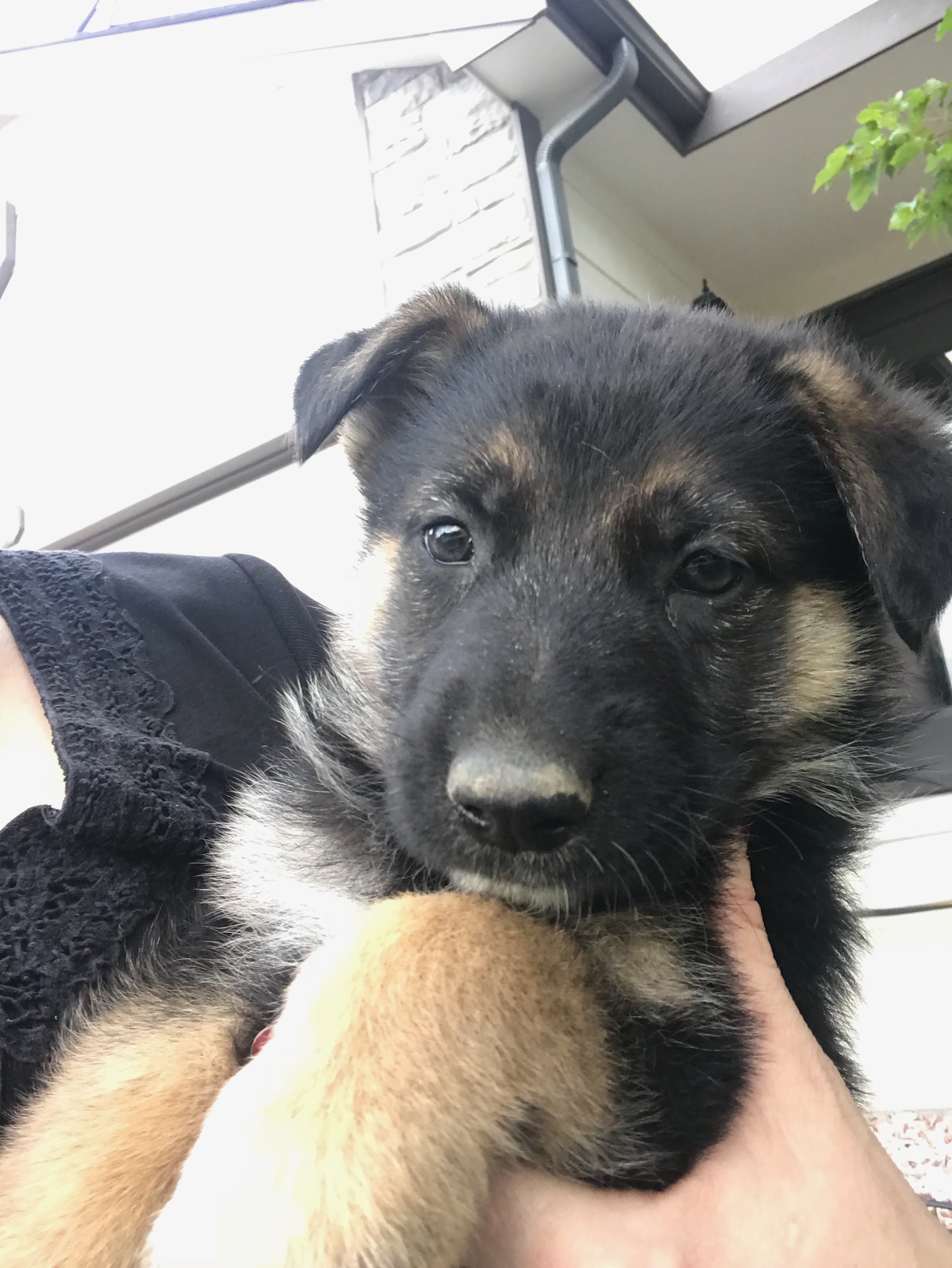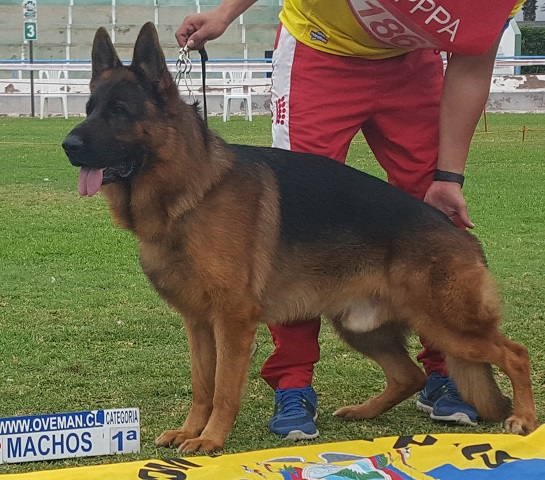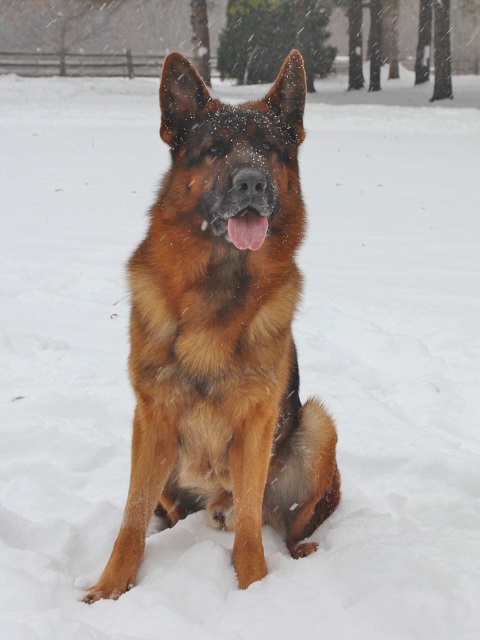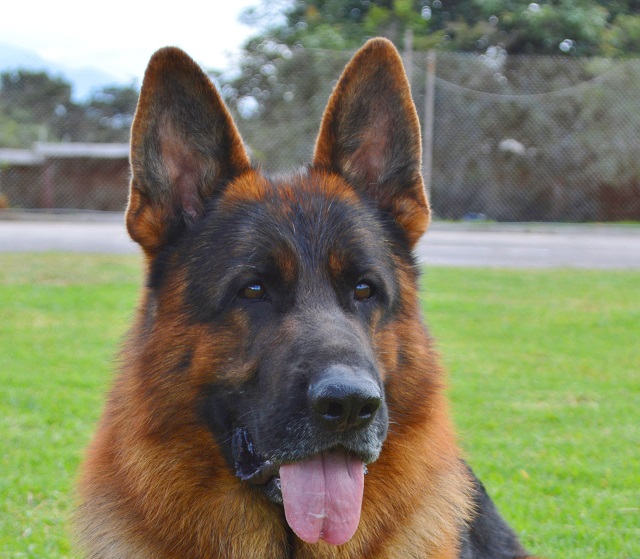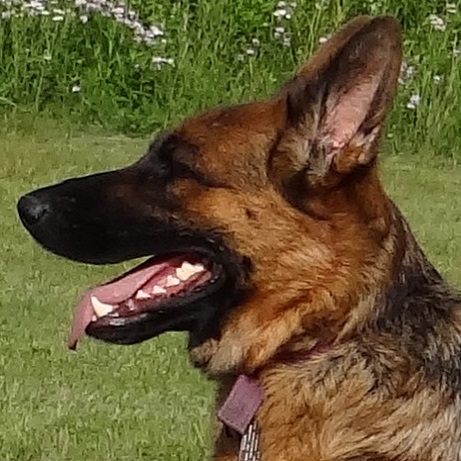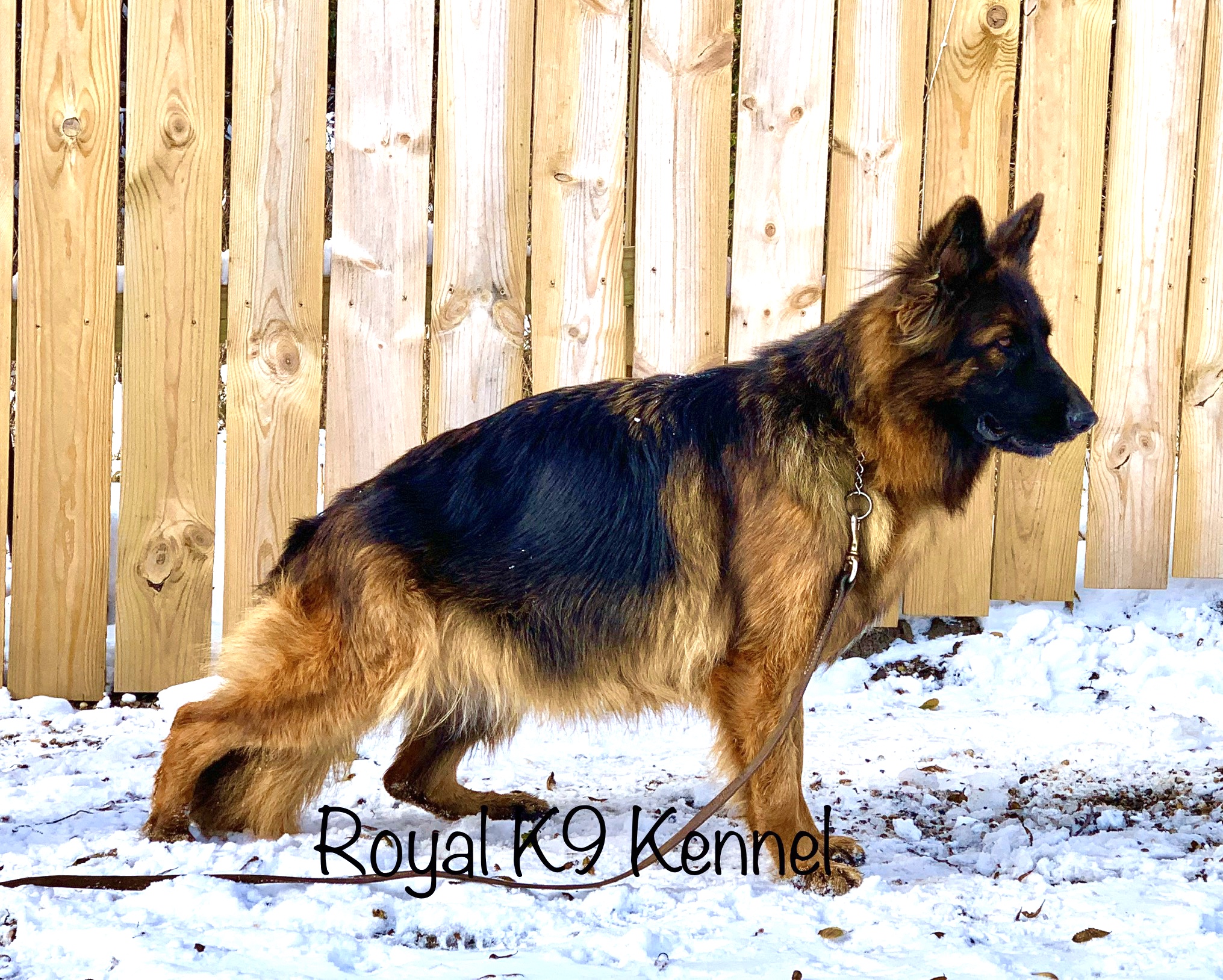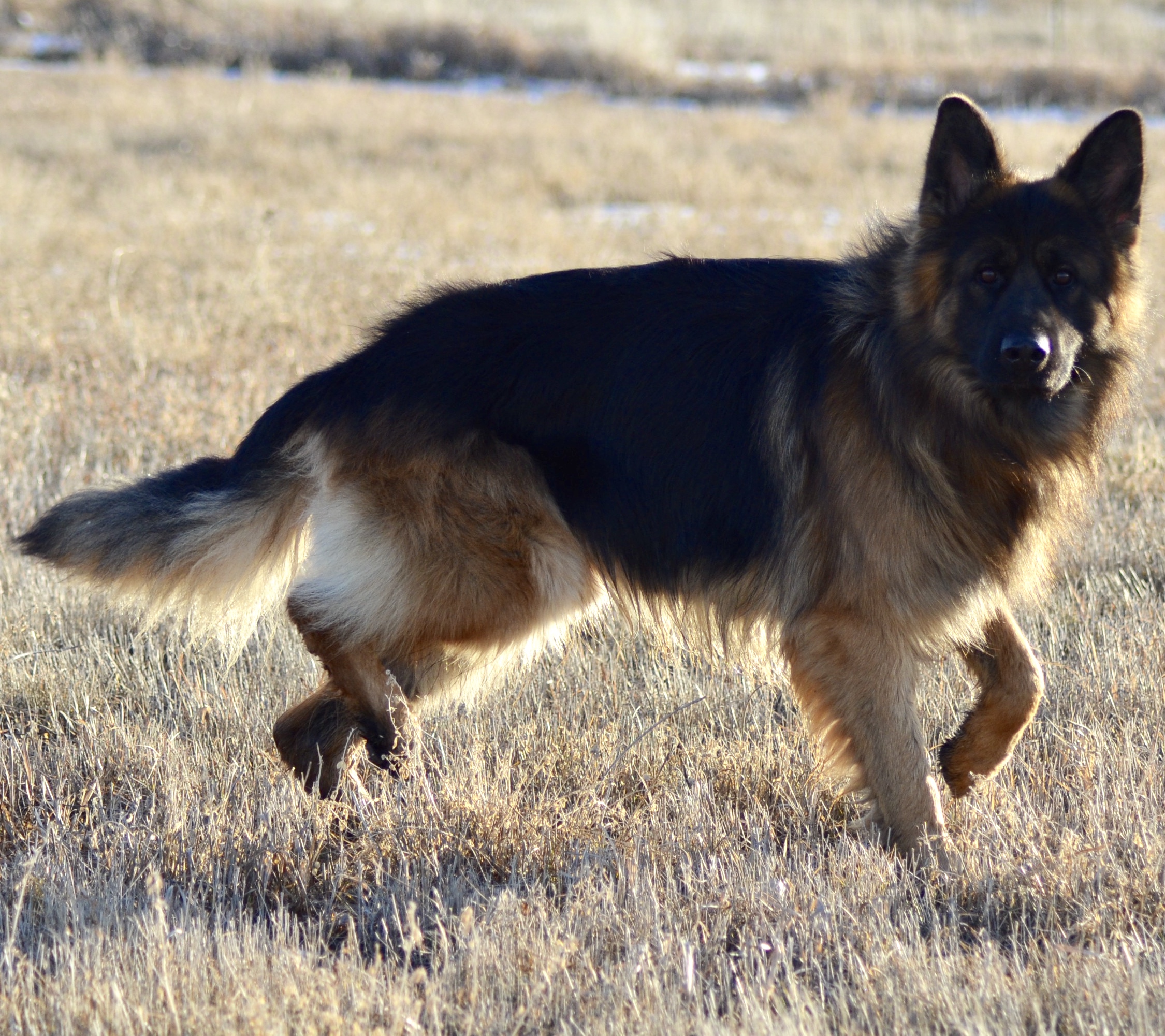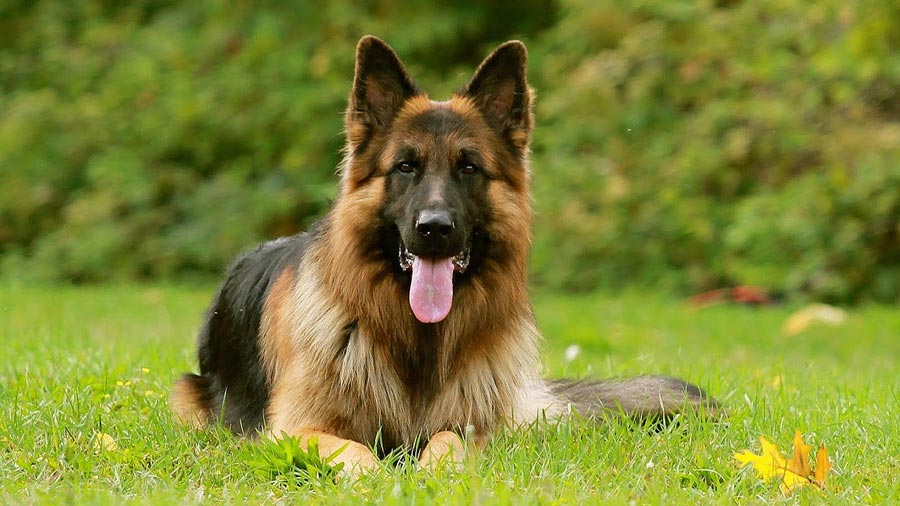

Alsatian (UK), Alsatian wolf dog (UK), Berger Allemand, Deutscher Schäferhund, Schäferhund
Overview
The German Shepherds are medium to large-sized dogs, well-balanced, muscular dog, slightly longer than tall, with a medium length coat, erect ears, and a low-set natural tail that normally reaches to the hock and is carried in a slight curve like a saber. The outline of the German Shepherd Dog is made up of smooth curves rather than angles. The head is in proportion to the size of the body, strong without appearing coarse or fine. Gender differences are readily apparent. The German Shepherd Dog should be evaluated as an all-around working dog, and exaggerations or faults should be penalized in proportion to how much they interfere with the dog’s ability to work.
The German Shepherd Dog is confident and fearless, willing to be approached, yet a certain level of aloofness towards strangers is acceptable. When working, the German Shepherd is alert and eager, adapting well to new tasks. Lack of confidence is a serious defect in the character of a German Shepherd. The structure of this breed was designed for efficient locomotion, particularly at the trot, so poor movement is another serious fault.
| Size | Medium to Large |
| Height | Male: 24-26 inches (60-65 cm)Female: 22-24 inches (55-60 cm) |
| Weight | Male: 66-88 pounds (30-40 kg)Female: 49-71 pounds (22-32 kg) |
| Lifespan | 10-13 years |
| Colors | Black Black and Tan Black & Silver Black & Red |
| Origin | Germany |
| Classification | Purebred |
| Good Lapcat |
| Good In Apartments |
The German Shepherd will do okay in an apartment if sufficiently exercised. They are relatively inactive indoors and do best with at least a large yard. |
| Good With Children |
Good with Kids: This is a suitable dog breed for kids. It is also friendly toward other pets but aloof and suspicious toward strangers. |
| Good With Dogs |
|
| Good With Cats |
The German Shepherd can also live peacefully with other dogs and pets, as long as he was taught to do so from puppyhood. Introducing an adult German Shepherd to a household with other pets can be more difficult if the dog isn't used to getting along with other dogs or cats. You may need to hire a professional trainer to help, or get advice from the rescue organization if that's where you acquired the adult German Shepherd. |
| Exercise Needs |
German Shepherd Dogs love strenuous activity, preferably combined with training of some kind, for these dogs are very intelligent and crave a good challenge. Most shepherds love to play ball or Frisbee. Whether it is ball chasing, Frisbee catching, obedience training, participation in a canine playgroup or just taking long walks/jogs, you must be willing to provide some form of daily, constructive exercise. The daily exercise must always include daily walks/jogs to satisfy the dog’s migration instinct. If under-exercised and/or mentally challenged, this breed can become restless and destructive. Does best with a job to do. |
| Trainability |
Easy Training: German Shepherd Dogs are eager pupils and are quick to learn new tricks. They are most responsive to their owner’s voice. The German Shepherd Dog’s versatility makes them suitable for a wide variety of activities including dog sports. |
| Affectionate |
|
| Playfulness |
|
| Grooming Requirements |
Moderate Maintenance: The German Shepherd Dog has a thick, medium-length double coat that sheds, a lot and constantly, so much that even his fans call him a “German shedder.” The undercoat sheds heavily in spring and fall, and the German Shepherd must be brushed and bathed frequently during that time to get out all the loose hair. The rest of the year, weekly brushing is generally enough to keep him clean. |
| Shedding |
Constant and Seasonal Shedding: Expect this dog to shed frequently. Be prepared to vacuum often. Brushing will reduce shedding as well as make the coat softer and cleaner. |
| Vocalization/Barking |
Occassional |
German Shepherd Pictures
